Law and Order (and A Little Disorder) in Early Grapevine

The first law enforcement In Texas, Constable Thomas Alley, was sworn in by Judge John Tumlinson on March 5, 1823. A second constable joined Alley a short time afterward. Three months later, Alley and his colleague stayed to protect the local colonies while ten other men (including Tumlinson) were sent out to protect the range and guard the frontier. These men later formed the Texas Rangers.
The Constables and Rangers joined forces and became an active group of roughly two hundred men. When the original Texas constitution was adopted, the constable was the only law enforcement defined by the document. Sam Houston formally separated the two groups. The constable would be elected by the people in each local area, known as precincts. The Texas Rangers became officers of the Republic of Texas. Both groups would be commissioned and report directly to the governor. Today that still holds true.
When Tarrant County held its first election for twenty official offices in 1850, half were from Grape Vine (two words until it was changed to one word by the US Post Office in January 1914). Those involved in law enforcement were Francis Jordan, Sheriff; and Berry Hall, Constable. The County was divided into three Precincts: Precinct 1 was the Birdville area; Precinct 2 was the area south of the West Fork of the Trinity; and Precinct 3 was then and now northeast Tarrant County.
From 1869-1872 there were no elected constables in Texas and only a couple appointed by a few local justices of the peace. But the Constitution of 1876, Article V, Section 18, mandated once again that constables be elected at the local precinct level for two-year terms. Later on constables would be elected for four-year terms.
From 1876 on, four constables were responsible for the four Tarrant County precincts; Grapevine has always been in Precinct 3. The constable’s primary duty is to serve the courts of Tarrant County, processing orders of courts accurately and expediently. They have the same duties and powers as any police officers and sheriffs, and may enforce all criminal and traffic laws and conduct criminal investigations. The constable, as he deemed necessary, would also place announcements in newspapers of violations and remind citizens of their duty to follow the law. In the Grapevine Sun of February 19, 1901 Constable Clyde Calvin Coleman of Precinct 3, of which Grapevine was the principal town, reminded residents not to dump garbage on highways but to take it to the City’s dumping ground.
During these early years, thirty-two well-known and respected farmers on the Grapevine Prairie (southeast of present Grapevine and northeast of present Euless, near the Dallas County line) determined that their county was “suffering greatly on account of horse thieves and all other manner of thieving” and organized themselves as the Grapevine Farmers Association on April 20, 1880. They drew up a constitution and bylaws as well as a pledge that each member was required to take. Membership was limited to those who came recommended by two current members in good standing. They registered each horse owner’s brand and kept careful records of horse sales. Dues were twenty-five cents. Some of the original members were James Edmonson, M. A. Beall, R. B. Merrell, William J. Borah, G. H. Winfrey, C. T. Winfrey, James Cate, William Cate, W. R. Terrill, and Thomas Newton.
Prospective members were admitted by secret ballot; if one black ball was counted the person was not admitted. Members also pledged to “act in harmony with the laws of our country and assist the authorities in the protection of the same.” If any member suffered a theft he was to report it the President, who would consult with the two Vice-Presidents and come up with the best way to recover the property. It was common for settlers to band together for protection when there was little official law enforcement, and sometimes they formed structured organizations like this one.
The federal census of 1880 showed Grapevine’s population as 199 residents, but even with a population as small as this, the community still had to deal with lawbreakers. Also, some victims and perpetrators were living just over the Dallas County line in Precinct 8. On January 26, 1883, the Fort Worth Daily Gazette reported that Tarrant County officers arrested “the two Huffman brothers and a companion named Cates” in Fort Worth, charging them with “having created a reign of terror at Grapevine, getting drunk and running the town.” On January 29 the same newspaper gave a more detailed account. It reported that “the executive officer” of Grapevine “was taken prisoner” by four men at a dance a few miles south of the town. These men were “using loud and vociferous language,” and when the officer intervened, he was “compelled to dance to the music of the participants.” The paper reported that four men were arrested and placed under a $200 bond. Constable Foster of Precinct 3 would proceed from there. The Gazette opined that “[r]owdyism . . . should be suppressed,” but the fate of the miscreants isn’t known.
Another incident occurred on February 2, 1883 when a boy who called himself Tom K. Clark rode a horse with no saddle into Fort Worth and sold the animal to a Mr. Brooks, owner of the Concho Wagon Yard. Suspicious officials arrested and held him for two days but released him when nobody claimed the horse. About March 29, almost two months later, Enoch Stanley of Grapevine arrived to claim and prove away the horse from Brooks, and the effort to re-arrest Tom Clark began. Again, the suspect’s fate is unknown.
Disputes among early Grapevine farmers sometimes escalated to dangerous levels. On September 2, 1883, the Fort Worth Daily Gazette reported that “Luther Thornton and Isaac Tompkins, leading farmers, attempted to kill each other at Grapevine to-day. Six shots were exchanged and neither hurt. Tompkins came to town and made affidavit against Thornton. Papers have been issued for the latter’s arrest.” The Galveston Daily News of the same date reported that each party fired two shots; it stated the reason for the “tilt” was Thornton’s attempt to water his horse at Tompkins’s well. Apparently Isaac was a lightning rod for trouble; the Gazette reported on January 30, 1884 that William Crump and William Borah (a neighbor of Tompkins) were acquitted in state district court of assault with intent to kill Tompkins.
On September 26, 1883 John Clark of Grapevine was tried in the District Court for theft of property over $20 in value. He was found guilty of a misdemeanor and fined $200.
Grapevine residents were also affected by crime in neighboring counties. On October 11, 1883, prominent Grapevine residents Henry Lipscomb and John Dykes were returning from selling cotton in Dallas when they were robbed by two masked men at the West Fork Bridge on the main road from Dallas to Irving. The bridge crossed the West Fork of the Trinity River just north of Eagle Ford in what today is west Dallas. Lipscomb lost $100 and Dykes $3.75. Upon returning to Grapevine they notified the Dallas sheriff, who attempted but failed to catch the suspects. On October 17, J. S. Cate of Grapevine was fined $120 in District Court for assaulting one Robert Stuart. Another bridge-based robbery occurred near Grapevine about October 23, when James Vant(?) and Henry Lipscomb, who returning home from school, were robbed by two unmasked men and threatened with their lives if they contacted law enforcement.
In October 1884 the Tarrant County attorney was asked to investigate a shooting scrape in Grapevine between a Mr. Murrell and Leonard West. Apparently Murrell mistook West for a horse thief but West survived the ordeal.
As far as we know, the constable was the primary law enforcement official in the four Tarrant County precincts. It’s not known when the first constable for Precinct 3 took office, but Henry Keeling of Grapevine was elected in November 1884. Sadly, he served only about seven months. He apparently committed suicide on July 10, 1885 by taking an overdose of morphine due to the unrequited love of a local girl. Keeling was replaced by W. H. Cloud, who resigned in November 1885. J. S. Foster was then appointed in Cloud’s place.
The demise of a cow in the Grapevine neighborhood apparently caused a great local stir. About 1883, Carroll Storey, a neighbor of a Mr. Beach, was charged with malicious mischief in the death of a Mr. Beach’s cow. According to the Fort Worth Daily Gazette, about forty witnesses were summoned by the court to testify on one side or the other. Courts came and went, and the case finally went to the jury on September 15, 1885. After all that, Storey was found guilty and charged a fine of ten dollars, but the whole thing caused factions to grow within the neighborhood as well as “commotion, . . . recrimination, abuse[,] and ‘back-capping.’”
A case involving “the eternal triangle” resulted in the shooting death of Henry Conefly (or Canefly) by John Barker on July 3, 1886. They were young Grapevine-area farmers apparently in love with the same woman, who was not named in the article. On July 3 Conefly apparently attacked Barker with a knife and Barker shot and killed him. Constable Foster lodged Barker at the jail in Fort Worth. Curiously, the Houston Post called Conefly and Barker “hardworking well-to-do young farmers.”
In September 1891 a case of mistaken identity got Grapevine resident Dan Scribner arrested for allegedly killing one R. W. Grubbs in Cooke County. He was held for two or three days and then released when the Cooke County prosecuting attorney contacted Fort Worth officials.
During the early to mid-1900s, many Texas counties operated “convict farms,” and “convict camps,” which were camps for the confinement of reasonably trustworthy prisoners who were usually employed on government projects such as road work. Most of these camps were not operated by the Sheriff, but by the County. Camp superintendents were appointed by county precinct commissioners. Their successor was the Tarrant County Sheriff’s Office. Tarrant County had two convict camps; Camp 1 served Precincts 1 and 2 and Camp 2 served Precincts 3 and 4.
Camp superintendents had to file monthly reports to the county, including expenditures and statements of roadwork done; convicts received, returned to jail, and discharged; salaries of the superintendent, guards, corral man, and cook; feed for horse/mule teams; groceries, blankets, blacksmith, physician, medicine, and other items.
The earliest reference to a convict camp in Precinct 3 in local newspapers was in the Dallas Morning News on April 17, 1898, when a cave-in caused one convict to sprain an ankle, demolish two wagons, and kill two mules. The Fort Worth Morning Register of August 23, 1899 reported that Ed Andrews had gone to the county court in Fort Worth on business connected with the convict camp he was supervising near Grapevine. At that time he supervised nine convicts and five hired workers.
In late November 1900 the Tarrant County Commissioners Court reorganized the camps so that there would be two convict camps and two grading crews; one camp and crew for Precincts Nos. 1 and 2, and one camp and crew for Nos. 3 and 4. Grapevine resident Drew Dread Wall was appointed superintendent of convict camp No. 2 south of the river. Camps were supplied by local merchants under monthly county contracts. The Jenkins Grocery Store and O. P. Turnage in Grapevine were awarded county contracts at different times in 1914 and 1915 to supply the local camp with groceries.
Occasional reports of goings-on at the camps also appeared in the Sun. On June 23, 1905, it reported that C. B. Smith shod twenty-two Tarrant County mules at the convict camp north of town and got home by seven o’clock that evening. Apparently the local citizens were not averse to having the camp near Grapevine. In mid-January 1909 Commissioner Huffman invited a few visitors to accompany him to the camp, which was superintended by R. W. Harrington and his assistants: J. F. Cruse, J. B. Tate, Tom Shivers, George Smith, and John Higgins. The fifteen prisoners at the time, the Sun reported, were “doing good work for Grapevine and vicinity, by graveling east Worth street.” More precisely, the convicts were “graveling Worth street from Main to the Public School building,” and when finished the road would be “a fine thoroughfare.”
All camps had their problems as well, including escapes, trusties injured or killed in accidents, and mismanagement of funds. In May 1913 Grapevine merchant J. D. Robinson was arrested on an indictment charging him with attempting to bribe the Assistant County Auditor by offering two percent on the contract price for convict camp supplies in Precinct 3. The indictment was rendered void the following September. In March 1915, Isaac McPherson a cook at the Grapevine camp who had been discharged a few days earlier, sought revenge, by returning to the camp with a shotgun where disarmed the guards and told only the black trusties to run. The guards called the deputy constable in Grapevine and the County Sheriff’s Office for help. McPherson was arrested and taken to Fort Worth.
Also, it was not uncommon for “Grapevineites” to attend picnics with county commissioners at the convict camp. On October 26, 1915, county commissioners and guests dined on “barbequed goat, mutton and beef, and plenty of yams, bread and coffee” at the Grapevine convict camp. In April 1920, a large crowd of [Pleasant Run] Baptist Church members took some fruit and cigars to the camp, where Reverend [Elihu] Newton gave a talk and the group was invited to return in the future.
Bribery also got A. R. Pannell into trouble in August 1902. Not only was he brought to Fort Worth from Grapevine charged with horse theft, but also with bringing a horse from Denton County, trading it for a horse and buggy in Grapevine, and with bribing the Grapevine constable with $100 dollars to let him go.
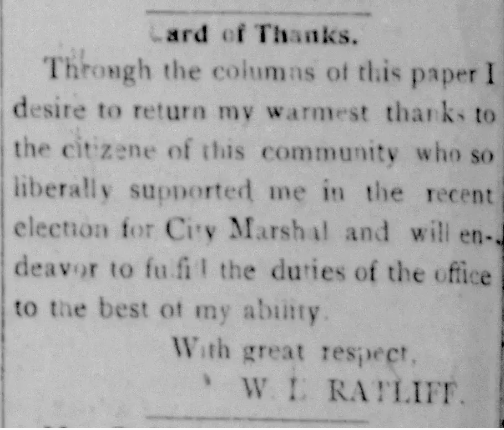
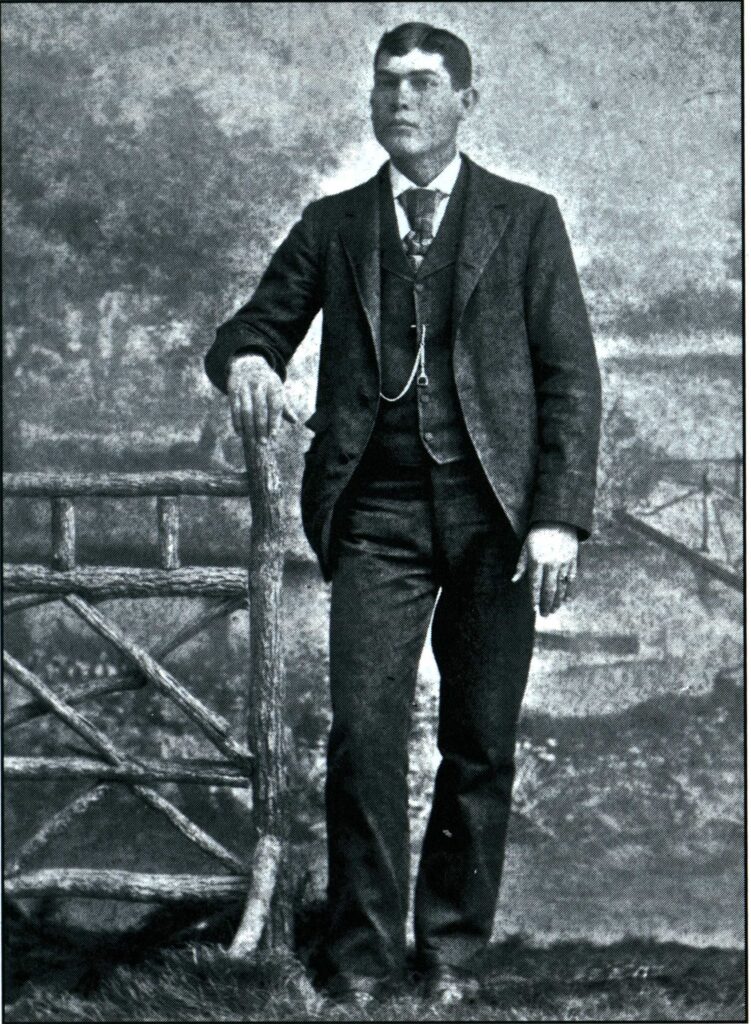
After Grapevine was incorporated on February 12, 1907, the city appointed the first town marshal, William Madison Bennett (Fig. 1). Walter L. Ratliff was elected City Marshal on April 6, 1907 (Fig. 2). Grapevine was served by town marshals until 1953, when the position of chief of police was created. Grapevine marshals took their jobs seriously. On June 15, 1907, the Sun reported that the city marshal had been busy putting up “quite a lot” of hitching racks over town and would enforce the ordinance prohibiting hitching to telephone poles and other places along the streets. On February 18, City Marshal J. W. May (who was also responsible for monitoring the water wells) is instructed to floor the old public well. In late December 1909, Marshal W. T. Bigbie published the latest city ordinance prohibiting the discharge of firearms or any other explosive device in any public place and requested Grapevine citizens to assist him in enforcing it, thereby lessening the risk of burning the town down and preventing accidents.
On April 10, 1909 the Sun reported that “[s]everal robberies have occurred of late in our little city and it seems to us that it would be a good plan for the business men of Grapevine to employ a night watchman and see if the robbing could not be stopped or the robbers apprehended.” However, Grapevine did not appoint a watchman until August 1914. An added benefit of doing this was a slight reduction in the town’s insurance. The night watchman patrolled the center of town at night to check that the stores were locked, served as the dog catcher, and checked the city water wells on Main Street. Beginning in 1919, Andrew Wiley Wilhoite, who owned Wilhoite’s Garage, provided office space in his business for the early night watchmen. Wiley’s son Ted reported that his father would take up a collection among Main Street businessmen to pay the watchmen.
The longest-serving marshals were James Skelton (J. S.) Daniel (1924-1941, Fig. 2) and Marvin Langley (1941-1953, Fig. 3). According to city council records, Langley was the only Grapevine marshal who had to fire his gun. Both men have been fondly remembered for their dedication to upholding the law and for their service to Grapevine citizens.
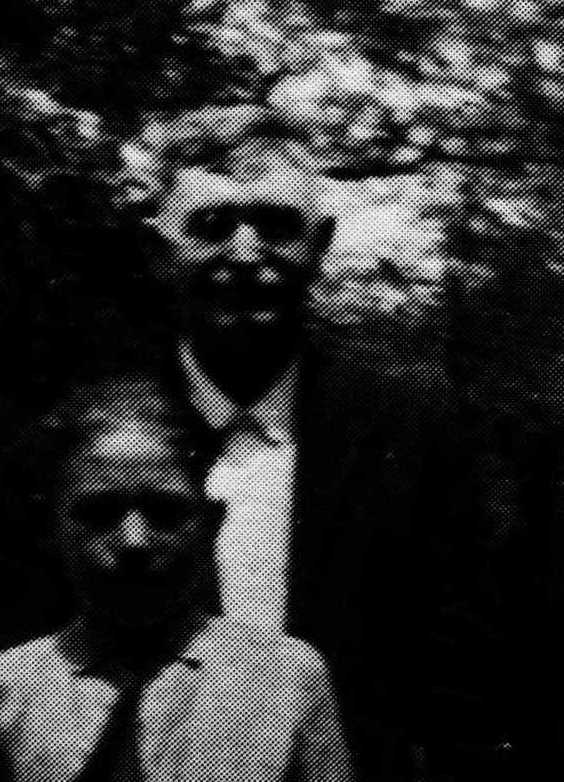

At the May 18, 1909 Town Council A. M. Dye, Henry R. Wall, and J. T. Lucas were appointed to look into the cost and location of a calaboose, which got its name from the Spanish word “calabozo”, meaning “dungeon.” At the next meeting (June 15, 1909) Henry Wall, Earl Yates, and A. M. Dye were charged with locating a site to build an 8-foot X 10-foot X 8-foot concrete jail, and the motion to buy handcuffs for the marshal passed. The cuffs had been purchased by the July 20 meeting.
The calaboose (Fig. 4) was built “near the present water tower” at the southwest corner of Texas and Barton Streets. Work started in mid-June 1909. It had a metal door, two tiny windows, and one-foot-thick walls, and took up eighty square feet. It contained a single iron cot and a tarp thrown over the openings to keep the wind out. The Sun was hopeful that “we won’t need it,” but conceded that “it takes the whole works to make an up-to-date city.” It was used to incarcerate petty criminals (mostly just for overnight stays) until the early 1950s. By 1953 the calaboose was no longer adequate as a jail, so it slowly fell into ruins. The Grapevine Historical Society moved it in 1976 to Heritage Park and brought to the intersection of South Main and Franklin Streets in 1994, thus highlighting its importance to early Grapevine law enforcement.

Citizen involvement in Grapevine law enforcement was evident in the case of two robberies in early February 1911. Two thieves broke into J. E. Foust’s and J. T. Yancy’s stores, taking shotguns, a pistol, some ammunition, and seven watches belonging to W. M. Howk, which were on display at Yancy’s. Mr. Foust, Marshal Bigbie, and town alderman Robert Mulinax pursued the bicycle-riding thieves in Foust’s car and caught up with them in Irving. They were taken to the Dallas jail, calling themselves George Miller and Jim Kenton of Dallas, to await transfer to the Tarrant County Jail, where they were held in the sum of $750 each for the action of the Grand Jury. Their ages were not given, but the Dallas Morning News called them ‘boys’. The stolen items were recovered. Also in 1911 Franklin Fron Tillery was appointed night watchman and a salary of $25 per month was authorized for the marshal.
What might be called a sensational burglary occurred on May 22, 1911 when the entire home of R. W. Stewart, between Carrollton and Grapevine, was ransacked. It was believed that chloroform was used to by the burglars to incapacitate the residents, who were drowsy and complaining of headaches the next morning, and were unaware of what happened. Among the items taken were a gold watch, a diamond-studded timepiece with inscriptions, an item valued at over $200, about $100 in cash, Mr. Stewart’s large diamond stud valued at $250, several rings, silverware and other articles of gold. Mr. Stewart’s pants and one trunk were found out in the field. Tarrant County Sheriff William M. Rea sent a deputy to Grapevine on May 23 after receiving a phone call. A man named Ben Haley was arrested in Dallas on June 10 but nothing further could be found in the newspapers about the crime after that date.
In late May 1912, the Town Council designated the first Monday of each month as “Clean-up Day,” whereby the marshal would make his rounds with a wagon and haul off rubbish put out by the citizens. “Grapevine expects everybody to help keep the city clean,” admonished the Sun. In keeping the spirit of municipal beautification alive, in January 1914 Marshal Ward D. Kerr was planting trees around town.
By April 1914 enough “leadfoot drivers” were present to cause safety concerns, so the Town Council decided to provide the marshal with a stopwatch. Apparently it was peaceable enough in September 1915 that the Sun reported that “our city marshal has gone to work at the cotton gin.” On March 13, 1920, the Sun observed that ‘[r]eports of bank robberies do not worry Grapevine bankers . . . Our town is . . . well protected with burglary alarm service and a paid night watchman.” It’s not known when the night watchman began receiving a salary, but by September 1932 he was paid $25 per month. An interesting fact is that in January 1923 the Council commissioned Dave Baker as City Policeman and issued him a permit to carry a pistol within the corporate limits of Grapevine; however nothing more is known about it in available sources.
As diligent as the town was, crimes still occurred. On the night of April 23, 1932, thieves broke into Jenkins’s Store and stole an automatic rifle, a twelve-gauge shotgun, knives, and ammunition. They were surprised by night watchman J. S. Daniel, who caught them breaking into Yates Dry Goods, and they escaped, leaving the shotgun. Mr. Daniel also discovered a robbery in March 1934 at Ted’s Feed Store in which $10.69 was taken from the cash register. Probably the most notorious robbery at gunpoint was of the Grapevine Home Bank on December 30, 1932 by Joe Les “Red” Stewart and Odell Chambless, who escaped with over $2,500. Stewart was captured at Bear Creek south of Grapevine a little more than two hours after the robbery by Justice of the Peace E. L. Jordan and grocery store clerks Edward Davis and Gordon Tate. On January 24, 1933 Gordon Tate was commissioned as a Special Deputy Sheriff for one year by Tarrant County Sheriff J. R. Wright.
On April 21, 1953, City Council voted for the City Marshal office be made separate from that of the night watchman. It also voted to pay the March $200 per month and to purchase an automobile to be specially marked for the Marshal and night watchman to use for patrol work. Funds for the vehicle of not more than $1,350 would be raised by subscription with the balance paid by the City. At a special meeting on April 29, W. L. Henderson was appointed night watchman and Deputy Marshal. Arthur B. Allen was appointed temporary Marshal.
Arthur Allen was the last night watchman in Grapevine, serving from May to July 1953. The first patrol car was purchased in 1953 for use by the City Marshal and night watchman. On May 5, 1953, City Council instructed the City Marshal to wear a uniform while on duty – khaki pants and shirt, black tie, and police-type cap and badge, paid for by the City. Marshal Allen was authorized to begin issuing traffic tickets effective June 10, 1953. Henderson resigned effective September 15, 1953 and Les Blevins was appointed night watchman and assistant City Marshal. On December 21, 1954 Mayor H. M. Cosnahan appointed Lee Tidwell as City Patrolman and night watchman.
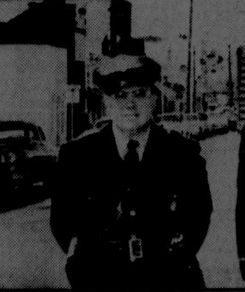
Council passed Ordinance 56-3, creating the office of Chief of Police, on June 5, 1956. It also hired John Frank Baze, on a trial basis, the City’s first Chief of Police, at the salary of $300 per month (Fig. 4). It also hired A. L. Richardson as City Patrolman at the salary of $45 per month. Council also voted to change the City Marshal title to Chief of Police (Ordinance 56-4). The post of night watchman was combined with that of patrolman in November 1957 because of the need to curtail police department expenses. The initial salary of the combined office was $230 per month, increasing by $5.00 per month, capping it at $260 per month as of January 1, 1958.
The development of law enforcement in early Grapevine demonstrates the problems, efforts, and commitment of a small farming community working to maintain an orderly society as it grew into a thriving Tarrant County city.




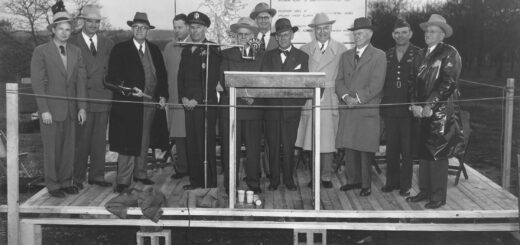
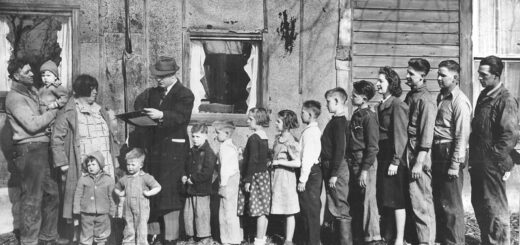
Recent Comments